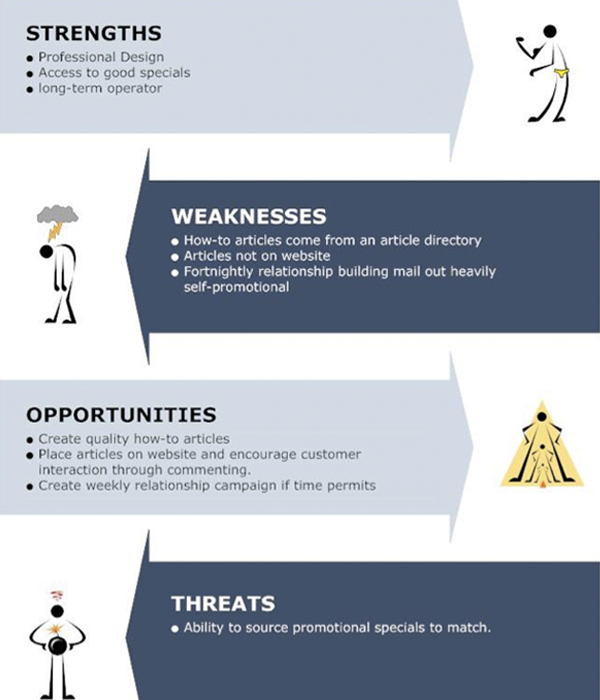A 3-step guide to conducting a competitive analysis for email marketing
Even if social media and mobile marketing are becoming more attractive, email marketing is still the most popular and effective way to increase sales and grow your business. If you’re not yet taking advantage of it, here are a few reasons why email marketing is vital to business success.
To make the most of it, you should conduct a competitor analysis. By keeping an eye on your competitors’ email marketing tactics you can see what you’re up against and what you can do to make your email communications stand out from the crowd.
Think about it this way: when your prospects and customers receive a batch of five emails in their inbox – one from you, the other four from your main competitors – don’t you want them to immediately click on yours?
Below is short guide to conducting an email marketing competitor analysis that you may find useful.
PS: If you’re not sure who your main competitors are, head on over to Google and run a search for your products and then make a list of the top five sites that appear most often in search results. You can also check out step one in our SEO competitor analysis guide as it provides more detailed instructions on how to identify your competitors.
Step 1: Sign up to your competitors’ email newsletters
Start by creating a new, generic email address, which you can then use to sign up to their mailing list. This way you’re not broadcasting to your competitors that you’re spying on them – although the chances are they’re doing the same to you. Whether you use a free Gmail or Yahoo account, just make sure that the email address you create has no identifying features to you or your company.
Step 2: Analyse
When you begin receiving your competitors’ emails, don’t just scan them but instead take a closer look at specific elements such as:
- Frequency: How often do they send emails: weekly, bi-monthly, monthly? Also, which day(s) and time(s) of day do they email?
- Subject line: Is it enticing people to click? How long/ short is it?
- Content: Are all their emails always purely promotional (things like product releases, special offers and discounts) or are they using the platform to build a relationship with their subscribers (for example: blog posts, how-to guides)?
- Call-to-action (CTA): CTAs are extremely important so make sure you analyse them carefully: are these buttons or text links? Is the text on the CTA generic such as “find out more”, “buy now” or is it lengthier and more specific?
- Length: You may also want to look at how much content they’re sharing in each email. Is their email made up of a customised image with a line of text and a CTA or is it a long email with several pieces of content?
- Design: Are they using images? How does the layout look?
- Mobile: When you open the email on your tablet and smartphone, do they display properly?
To make it easier to track all these emails, create a simple spreadsheet and take note of the above information for each competitor’s email. After you’ve been tracking your competitors for a few months, you will be able to assess the quality of their content, map out their mailing schedule and also be able to spot weaknesses that you can then take advantage of with your own campaigns.
Step 3: Conduct a SWOT analysis
Using your spreadsheet, conduct a SWOT analysis to evaluate strengths, weaknesses, opportunities, and threats for each of your main competitors. This will help you to draw actionable conclusions from your investigation.
Strengths
Try to identify the elements of your competitors’ emails that you think they’re doing well, such as:
- Professional design
- High-quality, useful, interesting content
- Great offers
- Powerful subject lines or calls-to-action
- The ability to engage customers in further conversation
Weaknesses
Now identify the things that you feel they are not doing well:
- Are they only using email to push their products, without offering any real value?
- Is their content poorly written?
- Are they sending emails too often?
- Is their design unprofessional or not optimised for mobile devices?
Opportunities
Next, based on the weaknesses that you’ve identified, look at ways in which these can provide you with an opportunity to do a much better job. For example: quality of writing, professional design, email frequency, the type of content your prospects would enjoy more (eg how-to articles, blog posts etc).
Threats
Finally, identify the areas that your competitors are doing really well, areas that you would find difficult to compete with. Look at things like high-quality, engaging content, comprehensive how-to guides, amazing discounts and prices. My advice? If you can’t do something better, then do something differently.
Here’s an excellent example of an email marketing SWOT chart from Shopping Cart Strategies:
Wrapping up
After you’ve been tracking your competitors’ email campaigns for a few months, the information you’ll have collected will be amazingly useful for assessing the quality of their email strategies and for identifying weaknesses that you can improve on. It will also be easier for you to identify opportunities that can help differentiate your emails from your competitors’.
If you’re interested in some other ways to see what your competitors are doing online, you might want to check out our Swift Six where we explain the six best tactics to use to keep track of your competitors.
Have you ever monitored and analysed your competitors’ emails? If you did, what was the most useful information that you got out of it?


